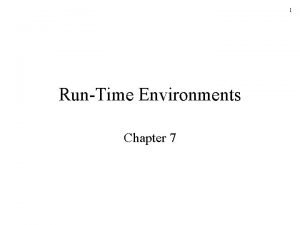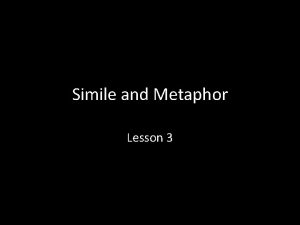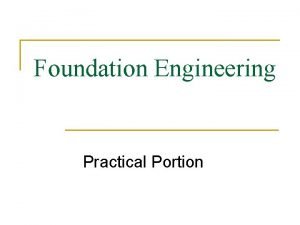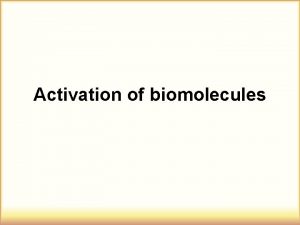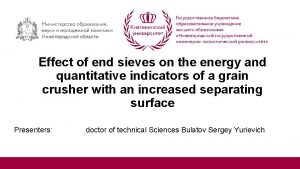Department of Chemistry Activation of molecular sieves What





- Slides: 5

Department of Chemistry Activation of molecular sieves

What are molecular sieves? “Molecular sieves are crystalline metal aluminosilicates having a threedimensional interconnecting network of silica and alumina tetrahedra. Water is removed from this network by heating to produce uniform cavities which selectively adsorb molecules of a specific size. A 4 to 8 -mesh sieve is normally used in gasphase applications, while the 8 to 12 -mesh type is common in liquidphase applications. The powder forms of the 3 A, 4 A, 5 A and 13 X sieves are suitable for specialized applications. ” What do we use them for? Removing trace amounts of water from both normal solvents and deuterated solvents.

Required Apparatus: Solvent bomb fitted with a Youngs tap Schlenk line (with a dewar of liquid nitrogen/solid CO 2 on the trap, daytime/nighttime) and vacuum gauge. Heating mantle with working temperature probe Heating beads Blast shield PPE (lab coat, safety glasses, gloves) Associated risks: Working under reduced pressure – risk of implosion Handling liquid nitrogen – cold burns Working at elevated temperatures (200 o. C) - Hot burns Managing risk

Procedure 1. Before set up: • • Check all glassware for cracks/defects, if you see any then do NOT use it Remove all flammables/valuable samples from your fumehood Inform group members in the local area of procedure to be carried out Fill solvent bomb with hot molecular sieves (in the oven for at least 24 hours) about half full and leave in oven until ready 2. Set up: • Ensure schlenk line is on with liquid nitrogen dewar and is pulling a good vacuum (5. 0 x 10 -2 mbar at least) • Attach bomb with sieves to your line, securely clamped and in an empty glass dish on a heating mantle • Fill glass dish with heating beads, ensuring good coverage of the bomb and above the level of the molecular sieves once full. • Fit a heating probe in the beads and set the temperature probe to 200 o. C. • Put the bomb under vacuum and place blast shield in front of the set up. Allow to heat to temperature and leave overnight

3. Cooling down • The next day, once the vacuum has returned to the original level, turn off the heating and leave to cool to room temperature under vacuum. • Put molecular sieves in glovebox and leave sealed to avoid absorption of any water traces.

